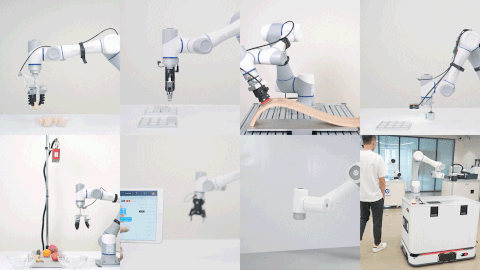What is a Cobot - Collaborative Robot?
- Jenny Cooper

- Mar 31, 2024
- 2 min read
Cobot is a short term combining the first 2 letter of collaborative and robot. Different than traditional industrial robots that long been synonymous with operating behind barriers, far removed from human workers. However, the emergence of collaborative robots, or cobots, is breaking down these barriers, quite literally, so make way for a new era of human-robot collaboration and wide range of interactions.

What exactly are cobots, and why are they getting so popular in various industries? Simply put, cobots are robotic arms designed to work alongside workers, so you can share the same work area without the need for any barriers. Most cobots are now equipped with advanced sensors and or software that helps them detect and respond to human in the area, therefore ensuring their safety and ultimately leading to efficient collaboration. For example, when a technician works in a laboratory alongside a cobot, they can see the application being performed in real-time. They can react to it with quality control or adjustments as needed.
But the significance of cobots extends beyond just their ability to coexist with humans in the same space. These machines will revolutionizing the way we approach tasks that were once deemed unsafe for humans to perform alone. From assisting with heavy lifting to handling machine feeding (machine tending) and assembly operations, cobots are streamlining workflows and enhancing productivity across a wide range of industries.
By the way, there are different levels of collaboration, each one catering to specific work scenarios:
1. Coexistence: In this mode, human and robot work alongside each other without physical barriers, sharing the same workspace. While they may not directly interact with each other, this setup promotes a sense of unity and integration within the workplace.
2. Sequential Collaboration: Here, human and robot are active in the shared workspace, but their actions are sequential. This means they work on the same task but take turns, ensuring a smooth and efficient workflow without any overlap.
3. Cooperation: The most advanced form of collaboration, cooperation involves both the robot and human working on the same task simultaneously. This synchronized effort allows for increased efficiency and output, with both parties contributing their unique strengths.
4. Responsive Collaboration: Perhaps the most intriguing aspect of cobot technology is its responsiveness to human movement. In this mode, the robot dynamically adjusts its actions in real-time based on the movements of the human worker, ensuring optimal safety and efficiency.
As different industries continue to embrace the potential of cobots for various applications, it's clear that the future of work will be defined by seamless human-robot collaboration. From manufacturing to healthcare, logistics, and a whole lot more, cobots are leading the way towards a more productive, efficient, and harmonious work environment.
If you have any more questions, At Devonics, we understand the significance of choosing the right cobot solution for your business. Our team of experts is here to assist you in navigating the complexities of cobot selection, ensuring that you find the perfect solution to enhance your productivity, efficiency, and competitiveness. To learn more about our cobot solutions and how we can support your automation needs please reach out us.




Comments